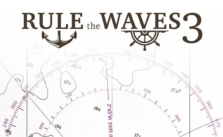Rule the Waves 3: Forming Permanent Divisions of Similar Ship Types

Navigating the high seas of strategy gaming in Rule the Waves 3 requires a keen understanding of your fleet’s organization. One crucial aspect of this is forming permanent divisions of similar ship types. By doing so, you create specialized groups within your navy, allowing you to maximize the benefits of strategic organization. In this guide, we will explore the essentials of forming these divisions.
Deciding on Forming Divisions
While not all ships necessarily need to be in divisions, forming divisions can offer improved control and utilization of your fleet. Ships in divisions are more likely to fight together in tactical battles, offering a planned organization and strategic advantage.
Division Composition
Most divisions can consist of 1 to 5 ships, with the exception being destroyer divisions, which can include up to 6 ships. Ships within the division must generally be of the same type. However, there are exceptions: Battleships (BB) and Battlecruisers (B) can be mixed in battle divisions, and Heavy Cruisers (CA) can be part of Battlecruiser Divisions (BC-divisions).
It’s advised to have at least three ships in a division to avoid the battle generator randomly adding ships to achieve the desired division strength.
Using the Division Editor
Within the Division Editor, you can assign specific roles to each division. This includes designating permanent scouting and screening forces to Carriers and Battleships. This strategic assignment of roles can significantly impact your battles’ outcomes.
Understanding and Managing Division Experience
Every division has an experience rating that influences various factors during a battle. These include signaling, fire distribution, spotting, and, to a lesser extent, the quality of the ship’s crew. This experience rating typically increases over time but can decrease if ships within the division are replaced or if the division’s commander changes.
Flagship Selection
The first ship in your division is assigned as the flagship. Changing the flagship will cause a small drop in division experience, so choose your flagship carefully.
Division Training
During wartime, you can schedule divisional training to accelerate the increase of the division’s experience. However, a division under training will be unavailable for any battles during that training turn. Remember, division training is different from a fleet exercise and does not occur in real-time.
Role of Division Commander
The abilities of your division commander have a considerable effect on the rate at which division experience is gained, the crew quality, and potentially other aspects depending on the commander’s special abilities. These abilities can include affecting the Rate of Fire (ROF) of all ships in the division, improving gunnery in the entire division, or affecting the tactical behavior of the division.
Remember that a “loose cannon” commander might unpredictably affect any or none of these attributes.
Monitoring and Adjusting
Ensure to monitor the performance of your divisions continuously. Due to mechanical failures, personnel issues, or other unforeseen circumstances, ships might be detached to perform other roles or be unavailable for battles. Regular adjustments in response to these changes will help you maintain efficient divisions.


